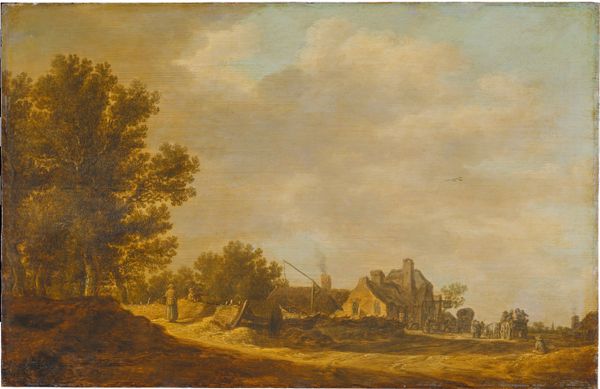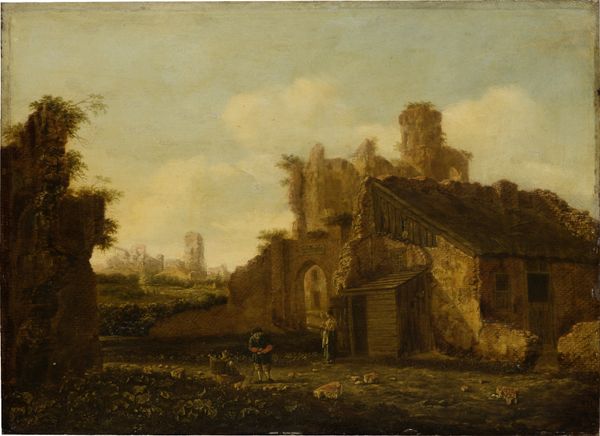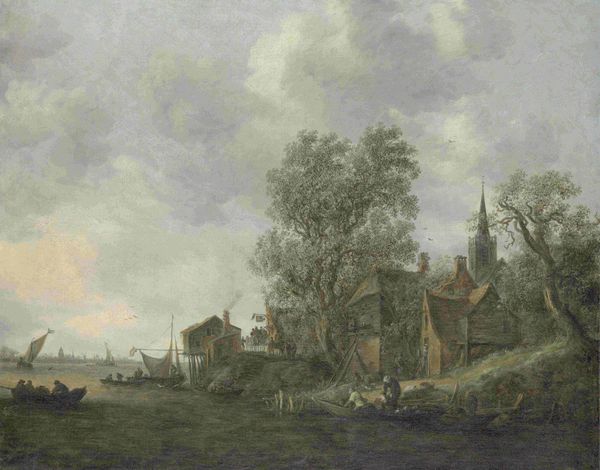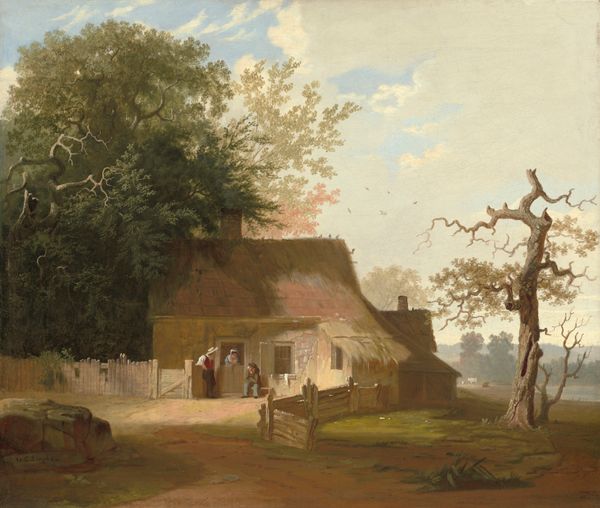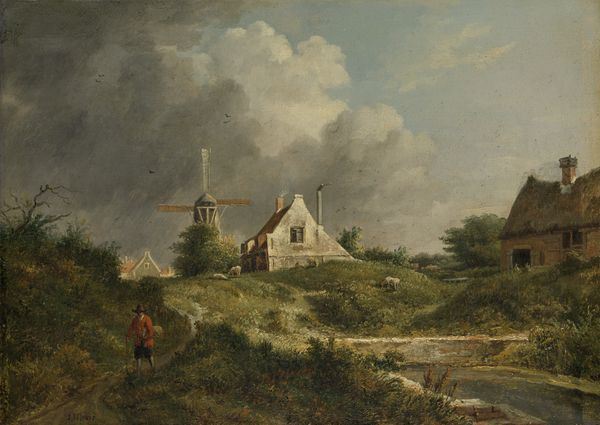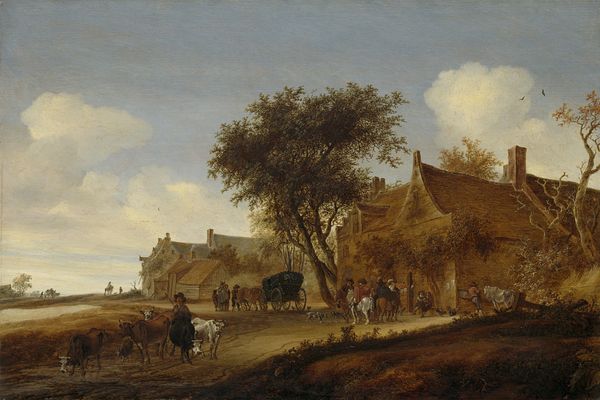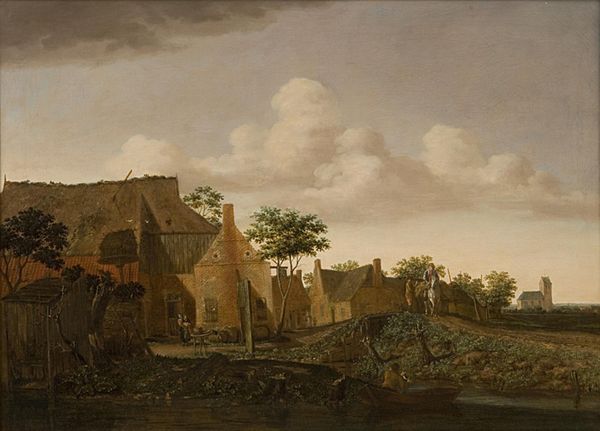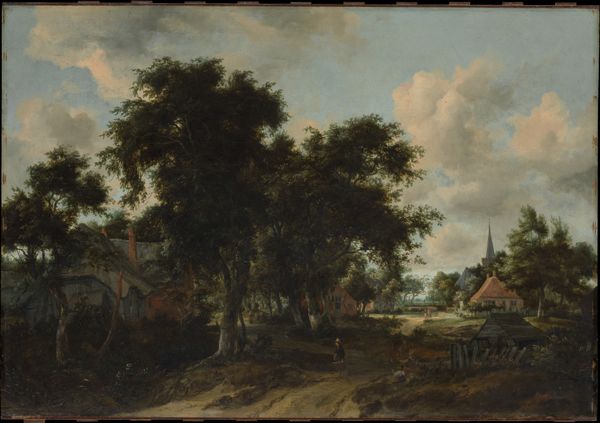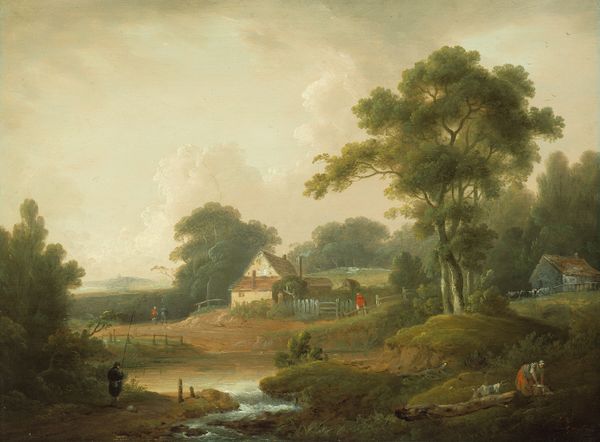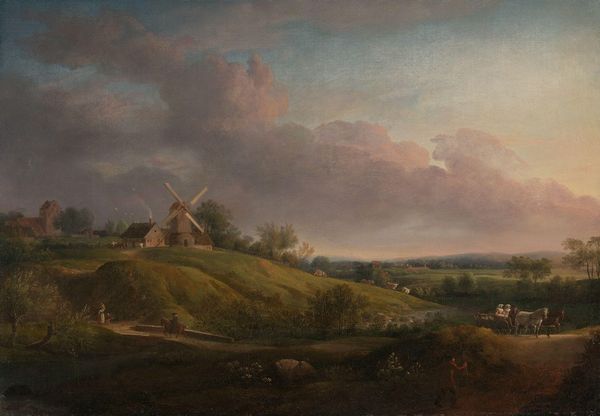
painting, oil-paint, oil
#
baroque
#
dutch-golden-age
#
painting
#
oil-paint
#
oil
#
landscape
#
impressionist landscape
#
oil painting
#
folk-art
#
14_17th-century
#
genre-painting
#
realism
#
building
Dimensions: 35.7 x 63.0 x min. 0.5 cm
Copyright: Public Domain
Curator: What strikes you first about this piece, the way the light catches the clouds or the road winding into the village? This painting by Jan van Goyen, "Village Street", was completed in 1628, early in his career, and captures a typical Dutch scene using oils. Editor: It's the tranquility, definitely. It's a lazy afternoon captured in pigment. There’s almost no horizon line! It's all sky and earth kind of blurred at their meeting, and the brushstrokes…I can feel the grain of the paint! The colour palette is incredibly muted. What can you tell me about it? Curator: The subdued color palette, mostly browns and grays, is quite characteristic of Van Goyen's early work. He employed what was known as a 'tonal' approach, using a limited range of colors to create a sense of atmospheric perspective and overall harmony. This village isn't presented as a place of labor or even commerce; the residents seem to be milling about at random. Editor: Absolutely, there's nothing monumental or heroic here. And look how casually rendered the figures are – just a few strokes each, and yet they feel so present. Is this a romanticised portrayal of peasant life? Curator: That’s the interesting thing. Van Goyen isn't glorifying peasant life, and in that respect it can be read through the politics of imagery at the time: during the 17th Century, images such as this suggested Holland as independent, quiet, and content during a time of shifting imperial influence, reflecting the growing power and prominence of the Dutch Republic in the larger European theatre. This wasn't just a village street; it was a declaration of values! Editor: That adds a whole other dimension to the painting, I will not lie! It feels less like just a charming landscape now, and more of a carefully crafted cultural statement. Did his choice of subject matter impact how he was regarded? Curator: Landscape painting had yet to receive the appreciation it has today, genre scenes and portraiture were dominant and prestigious. So in terms of the public role of the work, its immediate impact might have been overshadowed by art with more apparent narratives. Yet, through painters such as Van Goyen, who captured an idealised landscape, Dutch identity would begin to emerge through paint. Editor: Well, I will see the work a little differently now, for sure, it gives one plenty to consider, not just about 17th Century painting, but of our modern artistic concerns with identity. Curator: Agreed. I find his work really pushes me to look deeper at what landscape really represents and perhaps offers.
Comments
No comments
Be the first to comment and join the conversation on the ultimate creative platform.
